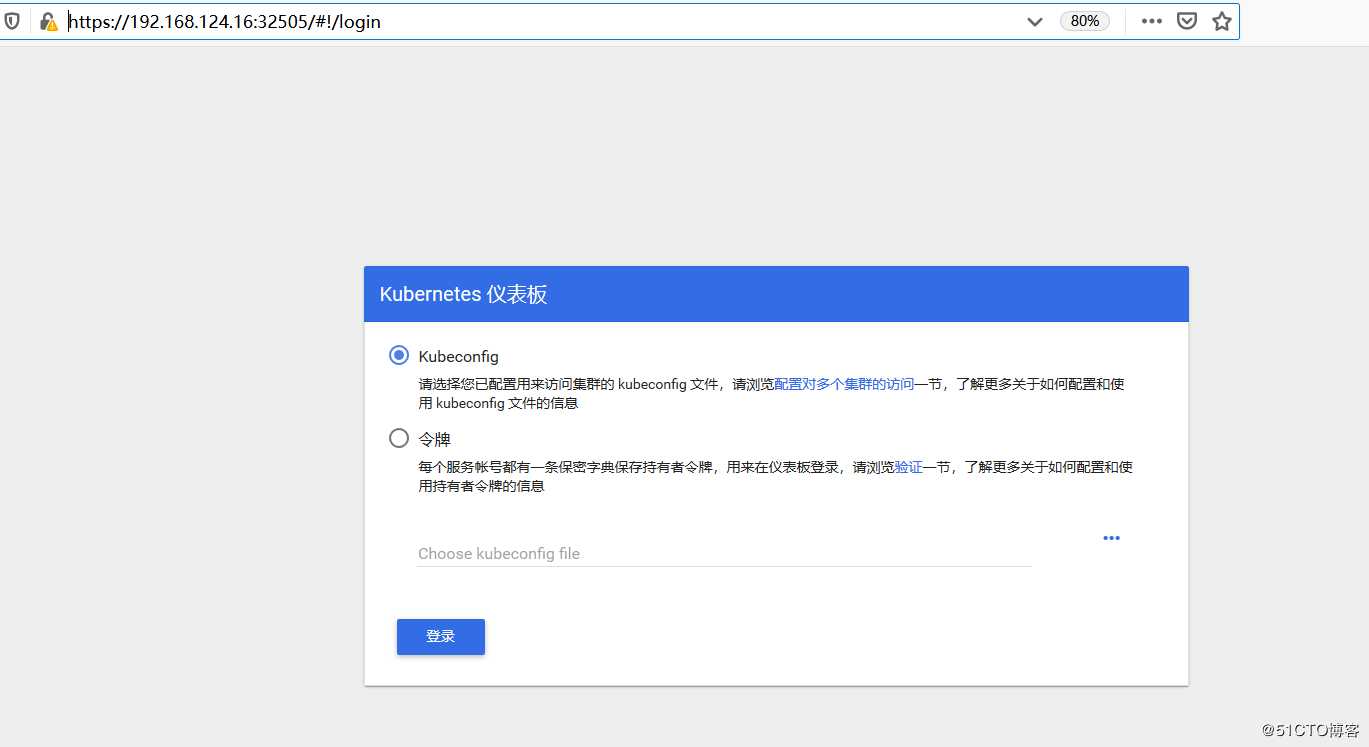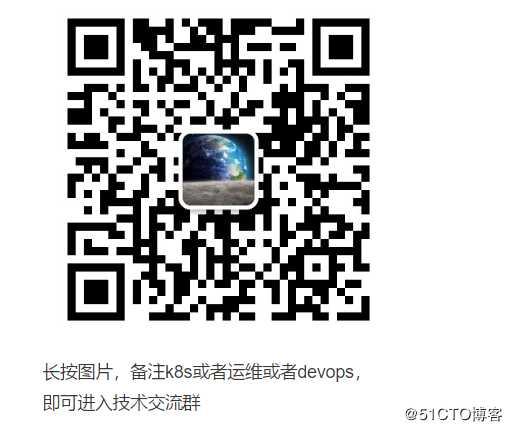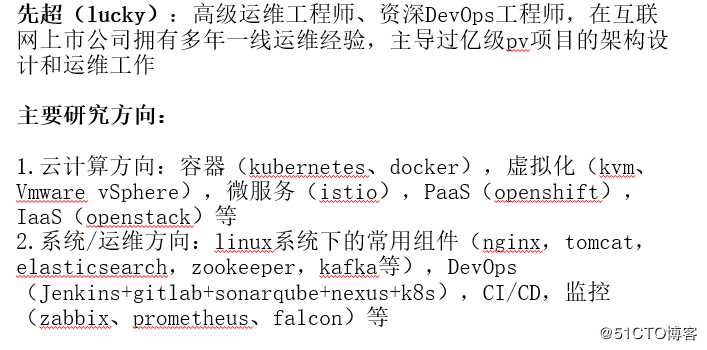标签:secret worker verify ber nat back gets cto upd
对于初学kubernetes(以下简称k8s)的同学来说,首先要过的第一关就是安装k8s,所以先超给各位大佬写了一篇文章来记录安装过程,如果你是初学小白,只要跟着做,也能保证100%完成安装,下面开始我们的安装之旅吧,内容较多,都是干货,无任何套路~~如果你觉得累,请看看下面这段话:我们想要去的地方,永远没有捷径,只有脚踏实地,一步一个脚印的才能走向诗和远方!
友情提示:
1.下文需要的yaml文件所在的github地址:
https://github.com/luckylucky421/kubernetes1.17.3/tree/master
大家可以把我的github仓库fork到你们自己的仓库里,觉得不错的不要忘记在我的github上点star哈~~
2.下文需要的镜像获取方式:镜像在百度网盘,镜像较大,拉取速度可能较慢,如果想要快速获取镜像,按文末方式获取
链接:https://pan.baidu.com/s/1UCldCLnIrDpE5NIoMqvXIg
提取码:xk3yk8s-master(192.168.124.16)配置:
操作系统:centos7.4、centos7.5、centos7.6以及更高版本都可以
配置:4核cpu,8G内存,两块60G硬盘
网络:桥接网络k8s-node(192.168.124.26)配置:
操作系统:centos7.6
配置:4核cpu,4G内存,两块60G硬盘
网络:桥接网络把虚拟机或者物理机配置成静态ip地址,这样机器重新启动后ip地址也不会发生改变。
修改 /etc/sysconfig/network-scripts/ifcfg-ens33文件,变成如下:
TYPE=Ethernet
PROXY_METHOD=none
BROWSER_ONLY=no
BOOTPROTO=static
IPADDR=192.168.124.16
NETMASK=255.255.255.0
GATEWAY=192.168.124.1
DNS1=192.168.124.1
DEFROUTE=yes
IPV4_FAILURE_FATAL=no
IPV6INIT=yes
IPV6_AUTOCONF=yes
IPV6_DEFROUTE=yes
IPV6_FAILURE_FATAL=no
IPV6_ADDR_GEN_MODE=stable-privacy
NAME=ens33
DEVICE=ens33
ONBOOT=yes修改配置文件之后需要重启网络服务才能使配置生效,重启网络服务命令如下:service network restart
ifcfg-ens33文件配置解释:
IPADDR=192.168.124.16 #ip地址,需要跟自己电脑所在网段一致
NETMASK=255.255.255.0 #子网掩码,需要跟自己电脑所在网段一致
GATEWAY=192.168.124.1 #网关,在自己电脑打开cmd,输入ipconfig /all可看到
DNS1=192.168.124.1 #DNS,在自己电脑打开cmd,输入ipconfig /all可看到修改 /etc/sysconfig/network-scripts/ifcfg-ens33文件,变成如下:
TYPE=Ethernet
PROXY_METHOD=none
BROWSER_ONLY=no
BOOTPROTO=static
IPADDR=192.168.124.26
NETMASK=255.255.255.0
GATEWAY=192.168.124.1
DNS1=192.168.124.1
DEFROUTE=yes
IPV4_FAILURE_FATAL=no
IPV6INIT=yes
IPV6_AUTOCONF=yes
IPV6_DEFROUTE=yes
IPV6_FAILURE_FATAL=no
IPV6_ADDR_GEN_MODE=stable-privacy
NAME=ens33
DEVICE=ens33
ONBOOT=yes修改配置文件之后需要重启网络服务才能使配置生效,重启网络服务命令如下:service network restart
yum -y install wget net-tools nfs-utils lrzsz gcc gcc-c++ make cmake libxml2-devel openssl-devel curl curl-devel unzip sudo ntp libaio-devel wget vim ncurses-devel autoconf automake zlib-devel python-devel epel-release lrzsz openssh-server socat ipvsadm conntrack
systemctl stop firewalld && systemctl disable firewalld
yum install iptables-services -y
service iptables stop && systemctl disable iptables
ntpdate cn.pool.ntp.org
crontab -e
* */1 * * * /usr/sbin/ntpdate cn.pool.ntp.org关闭selinux,设置永久关闭,这样重启机器selinux也处于关闭状态
修改/etc/sysconfig/selinux文件
sed -i ‘s/SELINUX=enforcing/SELINUX=disabled/‘ /etc/sysconfig/selinux
sed -i "s/SELINUX=enforcing/SELINUX=disabled/g" /etc/selinux/config上面文件修改之后,需要重启虚拟机,可以强制重启:
reboot -f
swapoff -a
#永久禁用,打开/etc/fstab注释掉swap那一行。
sed -i ‘s/.*swap.*/#&/‘ /etc/fstabcat <<EOF > /etc/sysctl.d/k8s.conf
net.bridge.bridge-nf-call-ip6tables = 1
net.bridge.bridge-nf-call-iptables = 1
EOF
sysctl --system在k8s-master(192.168.124.16)上:
hostnamectl set-hostname k8s-master
k8s-node(192.168.124.26)上:
hostnamectl set-hostname k8s-node
在/etc/hosts文件增加如下两行:
192.168.124.16 k8s-master
192.168.124.26 k8s-node在k8s-master上操作
ssh-keygen -t rsa
#一直回车
ssh-copy-id -i .ssh/id_rsa.pub root@192.168.124.26
#上面需要输入密码,输入k8s-node物理机密码即可(1)备份原来的yum源
mv /etc/yum.repos.d/CentOS-Base.repo /etc/yum.repos.d/CentOS-Base.repo.backup
(2)下载阿里的yum源
wget -O /etc/yum.repos.d/CentOS-Base.repo http://mirrors.aliyun.com/repo/Centos-7.repo
(3)生成新的yum缓存
yum makecache fast
(4)配置安装k8s需要的yum源
cat <<EOF > /etc/yum.repos.d/kubernetes.repo
[kubernetes]
name=Kubernetes
baseurl=https://mirrors.aliyun.com/kubernetes/yum/repos/kubernetes-el7-x86_64
enabled=1
gpgcheck=0
EOF(5)清理yum缓存
yum clean all
(6)生成新的yum缓存
yum makecache fast
(7)更新软件包
yum -y update
(8)安装软件包
yum -y install yum-utils device-mapper-persistent-data lvm2
(9)添加新的软件源
yum-config-manager --add-repo http://mirrors.aliyun.com/docker-ce/linux/centos/docker-ce.repo
yum list docker-ce --showduplicates |sort -r
yum install -y docker-ce-19*
systemctl enable docker && systemctl start docker
#查看docker状态,如果状态是active(running),说明docker是正常运行状态
systemctl status docker cat > /etc/docker/daemon.json <<EOF
{
"exec-opts": ["native.cgroupdriver=systemd"],
"log-driver": "json-file",
"log-opts": {
"max-size": "100m"
},
"storage-driver": "overlay2",
"storage-opts": [
"overlay2.override_kernel_check=true"
]
}
EOFsystemctl restart docker
yum install kubeadm-1.17.3 kubelet-1.17.3
systemctl enable kubeletdocker load -i kube-apiserver.tar.gz
docker load -i kube-scheduler.tar.gz
docker load -i kube-controller-manager.tar.gz
docker load -i pause.tar.gz
docker load -i cordns.tar.gz
docker load -i etcd.tar.gz
docker load -i kube-proxy.tar.gz
docker load -i cni.tar.gz
docker load -i calico-node.tar.gz
docker load -i kubernetes-dashboard_1_10.tar.gz
docker load -i metrics-server-amd64_0_3_1.tar.gz
docker load -i addon.tar.gz说明:
pause版本是3.1
etcd版本是3.4.3
cordns版本是1.6.5
cni版本是3.5.3
calico版本是3.5.3
apiserver、scheduler、controller-manager、kube-proxy版本是1.17.3
kubernetes dashboard版本1.10.1
metrics-server版本0.3.1
addon-resizer版本是1.8.4kubeadm init --kubernetes-version=v1.17.3 --pod-network-cidr=10.244.0.0/16 --apiserver-advertise-address 192.168.124.16
显示如下,说明初始化成功了
To start using your cluster, you need to run the following as a regular user:
mkdir -p $HOME/.kube
sudo cp -i /etc/kubernetes/admin.conf $HOME/.kube/config
sudo chown $(id -u):$(id -g) $HOME/.kube/config
You should now deploy a pod network to the cluster.
Run "kubectl apply -f [podnetwork].yaml" with one of the options listed at:
https://kubernetes.io/docs/concepts/cluster-administration/addons/
Then you can join any number of worker nodes by running the following on each as root:
kubeadm join 192.168.124.16:6443 --token i9m8e5.z12dnlekjbmuebsk --discovery-token-ca-cert-hash sha256:2dc931b4508137fbe1bcb93dc84b7332e7e874ec5862a9e8b8fff9f7c2b57621 kubeadm join ... 这条命令需要记住,下面我们把k8s的node节点加入到集群需要在node节点输入这条命令,每次执行这个结果都是不一样的,大家记住自己执行的结果,在下面会用到
mkdir -p $HOME/.kube
sudo cp -i /etc/kubernetes/admin.conf $HOME/.kube/config
sudo chown $(id -u):$(id -g) $HOME/.kube/config
kubectl get nodes 显示如下
NAME STATUS ROLES AGE VERSION
k8s-master NotReady master 2m13s v1.17.3kubeadm join 192.168.124.16:6443 --token i9m8e5.z12dnlekjbmuebsk --discovery-token-ca-cert-hash sha256:2dc931b4508137fbe1bcb93dc84b7332e7e874ec5862a9e8b8fff9f7c2b57621 上面的这个加入到k8s节点的一串命令就是在3.3初始化的时候生成的
kubectl get nodes 显示如下
NAME STATUS ROLES AGE VERSION
k8s-master NotReady master 3m48s v1.17.3
k8s-node NotReady <none> 6s v1.17.3上面可看到Status状态都是NotReady,这是因为没有安装网络插件,如calico或者flannel
在master节点执行如下:kubectl apply -f calico.yaml
cat calico.yaml
#Calico Version v3.5.3
#https://docs.projectcalico.org/v3.5/releases#v3.5.3
#This manifest includes the following component versions:
#calico/node:v3.5.3
calico/cni:v3.5.3
This ConfigMap is used to configure a self-hosted Calico installation.
kind: ConfigMap
apiVersion: v1
metadata:
name: calico-config
namespace: kube-system
data:
#Typha is disabled.
typha_service_name: "none"
#Configure the Calico backend to use.
calico_backend: "bird"
#Configure the MTU to use
veth_mtu: "1440"
#The CNI network configuration to install on each node. The special
#values in this config will be automatically populated.
cni_network_config: |-
{
"name": "k8s-pod-network",
"cniVersion": "0.3.0",
"plugins": [
{
"type": "calico",
"log_level": "info",
"datastore_type": "kubernetes",
"nodename": "__KUBERNETES_NODE_NAME__",
"mtu": __CNI_MTU__,
"ipam": {
"type": "host-local",
"subnet": "usePodCidr"
},
"policy": {
"type": "k8s"
},
"kubernetes": {
"kubeconfig": "__KUBECONFIG_FILEPATH__"
}
},
{
"type": "portmap",
"snat": true,
"capabilities": {"portMappings": true}
}
]
}
---
#This manifest installs the calico/node container, as well
#as the Calico CNI plugins and network config on
#each master and worker node in a Kubernetes cluster.
kind: DaemonSet
apiVersion: apps/v1
metadata:
name: calico-node
namespace: kube-system
labels:
k8s-app: calico-node
spec:
selector:
matchLabels:
k8s-app: calico-node
updateStrategy:
type: RollingUpdate
rollingUpdate:
maxUnavailable: 1
template:
metadata:
labels:
k8s-app: calico-node
annotations:
#This, along with the CriticalAddonsOnly toleration below,
#marks the pod as a critical add-on, ensuring it gets
#priority scheduling and that its resources are reserved
#if it ever gets evicted.
scheduler.alpha.kubernetes.io/critical-pod: ‘‘
spec:
nodeSelector:
beta.kubernetes.io/os: linux
hostNetwork: true
tolerations:
#Make sure calico-node gets scheduled on all nodes.
- effect: NoSchedule
operator: Exists
#Mark the pod as a critical add-on for rescheduling.
- key: CriticalAddonsOnly
operator: Exists
- effect: NoExecute
operator: Exists
serviceAccountName: calico-node
#Minimize downtime during a rolling upgrade or deletion; tell Kubernetes to do a "force
#deletion": https://kubernetes.io/docs/concepts/workloads/pods/pod/#termination-of-pods.
terminationGracePeriodSeconds: 0
initContainers:
#This container installs the Calico CNI binaries
#and CNI network config file on each node.
- name: install-cni
image: quay.io/calico/cni:v3.5.3
command: ["/install-cni.sh"]
env:
#Name of the CNI config file to create.
- name: CNI_CONF_NAME
value: "10-calico.conflist"
#The CNI network config to install on each node.
- name: CNI_NETWORK_CONFIG
valueFrom:
configMapKeyRef:
name: calico-config
key: cni_network_config
#Set the hostname based on the k8s node name.
- name: KUBERNETES_NODE_NAME
valueFrom:
fieldRef:
fieldPath: spec.nodeName
#CNI MTU Config variable
- name: CNI_MTU
valueFrom:
configMapKeyRef:
name: calico-config
key: veth_mtu
#Prevents the container from sleeping forever.
- name: SLEEP
value: "false"
volumeMounts:
- mountPath: /host/opt/cni/bin
name: cni-bin-dir
- mountPath: /host/etc/cni/net.d
name: cni-net-dir
containers:
#Runs calico/node container on each Kubernetes node. This
#container programs network policy and routes on each
#host.
- name: calico-node
image: quay.io/calico/node:v3.5.3
env:
#Use Kubernetes API as the backing datastore.
- name: DATASTORE_TYPE
value: "kubernetes"
#Wait for the datastore.
- name: WAIT_FOR_DATASTORE
value: "true"
#Set based on the k8s node name.
- name: NODENAME
valueFrom:
fieldRef:
fieldPath: spec.nodeName
#Choose the backend to use.
- name: CALICO_NETWORKING_BACKEND
valueFrom:
configMapKeyRef:
name: calico-config
key: calico_backend
#Cluster type to identify the deployment type
- name: CLUSTER_TYPE
value: "k8s,bgp"
#Auto-detect the BGP IP address.
- name: IP
value: "autodetect"
- name: IP_AUTODETECTION_METHOD
value: "can-reach=192.168.124.56"
#Enable IPIP
- name: CALICO_IPV4POOL_IPIP
value: "Always"
#Set MTU for tunnel device used if ipip is enabled
- name: FELIX_IPINIPMTU
valueFrom:
configMapKeyRef:
name: calico-config
key: veth_mtu
#The default IPv4 pool to create on startup if none exists. Pod IPs will be
#chosen from this range. Changing this value after installation will have
#no effect. This should fall within `--cluster-cidr`.
- name: CALICO_IPV4POOL_CIDR
value: "10.244.0.0/16"
#Disable file logging so `kubectl logs` works.
- name: CALICO_DISABLE_FILE_LOGGING
value: "true"
#Set Felix endpoint to host default action to ACCEPT.
- name: FELIX_DEFAULTENDPOINTTOHOSTACTION
value: "ACCEPT"
#Disable IPv6 on Kubernetes.
- name: FELIX_IPV6SUPPORT
value: "false"
#Set Felix logging to "info"
- name: FELIX_LOGSEVERITYSCREEN
value: "info"
- name: FELIX_HEALTHENABLED
value: "true"
securityContext:
privileged: true
resources:
requests:
cpu: 250m
livenessProbe:
httpGet:
path: /liveness
port: 9099
host: localhost
periodSeconds: 10
initialDelaySeconds: 10
failureThreshold: 6
readinessProbe:
exec:
command:
- /bin/calico-node
- -bird-ready
- -felix-ready
periodSeconds: 10
volumeMounts:
- mountPath: /lib/modules
name: lib-modules
readOnly: true
- mountPath: /run/xtables.lock
name: xtables-lock
readOnly: false
- mountPath: /var/run/calico
name: var-run-calico
readOnly: false
- mountPath: /var/lib/calico
name: var-lib-calico
readOnly: false
volumes:
#Used by calico/node.
- name: lib-modules
hostPath:
path: /lib/modules
- name: var-run-calico
hostPath:
path: /var/run/calico
- name: var-lib-calico
hostPath:
path: /var/lib/calico
- name: xtables-lock
hostPath:
path: /run/xtables.lock
type: FileOrCreate
#Used to install CNI.
- name: cni-bin-dir
hostPath:
path: /opt/cni/bin
- name: cni-net-dir
hostPath:
path: /etc/cni/net.d
---
apiVersion: v1
kind: ServiceAccount
metadata:
name: calico-node
namespace: kube-system
---
#Create all the CustomResourceDefinitions needed for
#Calico policy and networking mode.
apiVersion: apiextensions.k8s.io/v1beta1
kind: CustomResourceDefinition
metadata:
name: felixconfigurations.crd.projectcalico.org
spec:
scope: Cluster
group: crd.projectcalico.org
version: v1
names:
kind: FelixConfiguration
plural: felixconfigurations
singular: felixconfiguration
---
apiVersion: apiextensions.k8s.io/v1beta1
kind: CustomResourceDefinition
metadata:
name: bgppeers.crd.projectcalico.org
spec:
scope: Cluster
group: crd.projectcalico.org
version: v1
names:
kind: BGPPeer
plural: bgppeers
singular: bgppeer
---
apiVersion: apiextensions.k8s.io/v1beta1
kind: CustomResourceDefinition
metadata:
name: bgpconfigurations.crd.projectcalico.org
spec:
scope: Cluster
group: crd.projectcalico.org
version: v1
names:
kind: BGPConfiguration
plural: bgpconfigurations
singular: bgpconfiguration
---
apiVersion: apiextensions.k8s.io/v1beta1
kind: CustomResourceDefinition
metadata:
name: ippools.crd.projectcalico.org
spec:
scope: Cluster
group: crd.projectcalico.org
version: v1
names:
kind: IPPool
plural: ippools
singular: ippool
---
apiVersion: apiextensions.k8s.io/v1beta1
kind: CustomResourceDefinition
metadata:
name: hostendpoints.crd.projectcalico.org
spec:
scope: Cluster
group: crd.projectcalico.org
version: v1
names:
kind: HostEndpoint
plural: hostendpoints
singular: hostendpoint
---
apiVersion: apiextensions.k8s.io/v1beta1
kind: CustomResourceDefinition
metadata:
name: clusterinformations.crd.projectcalico.org
spec:
scope: Cluster
group: crd.projectcalico.org
version: v1
names:
kind: ClusterInformation
plural: clusterinformations
singular: clusterinformation
---
apiVersion: apiextensions.k8s.io/v1beta1
kind: CustomResourceDefinition
metadata:
name: globalnetworkpolicies.crd.projectcalico.org
spec:
scope: Cluster
group: crd.projectcalico.org
version: v1
names:
kind: GlobalNetworkPolicy
plural: globalnetworkpolicies
singular: globalnetworkpolicy
---
apiVersion: apiextensions.k8s.io/v1beta1
kind: CustomResourceDefinition
metadata:
name: globalnetworksets.crd.projectcalico.org
spec:
scope: Cluster
group: crd.projectcalico.org
version: v1
names:
kind: GlobalNetworkSet
plural: globalnetworksets
singular: globalnetworkset
---
apiVersion: apiextensions.k8s.io/v1beta1
kind: CustomResourceDefinition
metadata:
name: networkpolicies.crd.projectcalico.org
spec:
scope: Namespaced
group: crd.projectcalico.org
version: v1
names:
kind: NetworkPolicy
plural: networkpolicies
singular: networkpolicy
---
#Include a clusterrole for the calico-node DaemonSet,
#and bind it to the calico-node serviceaccount.
kind: ClusterRole
apiVersion: rbac.authorization.k8s.io/v1beta1
metadata:
name: calico-node
rules:
#The CNI plugin needs to get pods, nodes, and namespaces.
- apiGroups: [""]
resources:
- pods
- nodes
- namespaces
verbs:
- get
- apiGroups: [""]
resources:
- endpoints
- services
verbs:
#Used to discover service IPs for advertisement.
- watch
- list
#Used to discover Typhas.
- get
- apiGroups: [""]
resources:
- nodes/status
verbs:
#Needed for clearing NodeNetworkUnavailable flag.
- patch
#Calico stores some configuration information in node annotations.
- update
#Watch for changes to Kubernetes NetworkPolicies.
- apiGroups: ["networking.k8s.io"]
resources:
- networkpolicies
verbs:
- watch
- list
#Used by Calico for policy information.
- apiGroups: [""]
resources:
- pods
- namespaces
- serviceaccounts
verbs:
- list
- watch
#The CNI plugin patches pods/status.
- apiGroups: [""]
resources:
- pods/status
verbs:
- patch
#Calico monitors various CRDs for config.
- apiGroups: ["crd.projectcalico.org"]
resources:
- globalfelixconfigs
- felixconfigurations
- bgppeers
- globalbgpconfigs
- bgpconfigurations
- ippools
- globalnetworkpolicies
- globalnetworksets
- networkpolicies
- clusterinformations
- hostendpoints
verbs:
- get
- list
- watch
#Calico must create and update some CRDs on startup.
- apiGroups: ["crd.projectcalico.org"]
resources:
- ippools
- felixconfigurations
- clusterinformations
verbs:
- create
- update
#Calico stores some configuration information on the node.
- apiGroups: [""]
resources:
- nodes
verbs:
- get
- list
- watch
#These permissions are only requried for upgrade from v2.6, and can
#be removed after upgrade or on fresh installations.
- apiGroups: ["crd.projectcalico.org"]
resources:
- bgpconfigurations
- bgppeers
verbs:
- create
- update
---
apiVersion: rbac.authorization.k8s.io/v1beta1
kind: ClusterRoleBinding
metadata:
name: calico-node
roleRef:
apiGroup: rbac.authorization.k8s.io
kind: ClusterRole
name: calico-node
subjects:
- kind: ServiceAccount
name: calico-node
namespace: kube-system
---在k8s-master节点查看calico是否处于running状态
kubectl get pods -n kube-system
显示如下,说明calico部署正常,如果calico没有部署成功,cordns会一直显示在ContainerCreating
calico-node-rkklw 1/1 Running 0 3m4s
calico-node-rnzfq 1/1 Running 0 3m4s
coredns-6955765f44-jzm4k 1/1 Running 0 25m
coredns-6955765f44-mmbr7 1/1 Running 0 25m在k8s-master节点查看STATUS状态kubectl get nodes
显示如下,STATUS状态是ready,表示集群处于正常状态
NAME STATUS ROLES AGE VERSION
k8s-master Ready master 9m52s v1.17.3
k8s-node Ready <none> 6m10s v1.17.3在k8s-master节点操作kubectl apply -f kubernetes-dashboard.yaml
cat kubernetes-dashboard.yaml
#Copyright 2017 The Kubernetes Authors.
#Licensed under the Apache License, Version 2.0 (the "License");
#you may not use this file except in compliance with the License.
#You may obtain a copy of the License at
#http://www.apache.org/licenses/LICENSE-2.0
#Unless required by applicable law or agreed to in writing, software
#distributed under the License is distributed on an "AS IS" BASIS,
#WITHOUT WARRANTIES OR CONDITIONS OF ANY KIND, either express or implied.
#See the License for the specific language governing permissions and
#limitations under the License.
#Configuration to deploy release version of the Dashboard UI compatible with
#Kubernetes 1.8.
#Example usage: kubectl create -f <this_file>
---
apiVersion: v1
kind: Secret
metadata:
labels:
k8s-app: kubernetes-dashboard
# Allows editing resource and makes sure it is created first.
addonmanager.kubernetes.io/mode: EnsureExists
name: kubernetes-dashboard-certs
namespace: kube-system
type: Opaque
---
apiVersion: v1
kind: Secret
metadata:
labels:
k8s-app: kubernetes-dashboard
# Allows editing resource and makes sure it is created first.
addonmanager.kubernetes.io/mode: EnsureExists
name: kubernetes-dashboard-key-holder
namespace: kube-system
type: Opaque
---
# ------------------- Dashboard Service Account ------------------- #
apiVersion: v1
kind: ServiceAccount
metadata:
labels:
k8s-app: kubernetes-dashboard
name: kubernetes-dashboard-admin
namespace: kube-system
---
# ------------------- Dashboard Role & Role Binding ------------------- #
apiVersion: rbac.authorization.k8s.io/v1
kind: ClusterRoleBinding
metadata:
name: kubernetes-dashboard-admin
namespace: kube-system
roleRef:
apiGroup: rbac.authorization.k8s.io
kind: ClusterRole
name: cluster-admin
subjects:
- kind: ServiceAccount
name: kubernetes-dashboard-admin
namespace: kube-system
---
apiVersion: rbac.authorization.k8s.io/v1
kind: ClusterRole
metadata:
name: cluster-watcher
rules:
- apiGroups:
- ‘*‘
resources:
- ‘*‘
verbs:
- ‘get‘
- ‘list‘
- nonResourceURLs:
- ‘*‘
verbs:
- ‘get‘
- ‘list‘
- apiGroups: [""]
resources: ["secrets"]
resourceNames: ["kubernetes-dashboard-key-holder", "kubernetes-dashboard-certs"]
verbs: ["get", "update", "delete"]
# Allow Dashboard to get and update ‘kubernetes-dashboard-settings‘ config map.
- apiGroups: [""]
resources: ["configmaps"]
resourceNames: ["kubernetes-dashboard-settings"]
verbs: ["get", "update"]
# Allow Dashboard to get metrics from heapster.
- apiGroups: [""]
resources: ["services"]
resourceNames: ["heapster"]
verbs: ["proxy"]
---
# ------------------- Dashboard Deployment ------------------- #
apiVersion: apps/v1
kind: Deployment
metadata:
name: kubernetes-dashboard
namespace: kube-system
labels:
k8s-app: kubernetes-dashboard
kubernetes.io/cluster-service: "true"
addonmanager.kubernetes.io/mode: Reconcile
spec:
selector:
matchLabels:
k8s-app: kubernetes-dashboard
template:
metadata:
labels:
k8s-app: kubernetes-dashboard
annotations:
scheduler.alpha.kubernetes.io/critical-pod: ‘‘
seccomp.security.alpha.kubernetes.io/pod: ‘docker/default‘
spec:
priorityClassName: system-cluster-critical
containers:
- name: kubernetes-dashboard
image: k8s.gcr.io/kubernetes-dashboard-amd64:v1.10.1
resources:
limits:
cpu: 100m
memory: 300Mi
requests:
cpu: 50m
memory: 100Mi
ports:
- containerPort: 8443
protocol: TCP
args:
- --auto-generate-certificates
volumeMounts:
- name: kubernetes-dashboard-certs
mountPath: /certs
- name: tmp-volume
mountPath: /tmp
livenessProbe:
httpGet:
scheme: HTTPS
path: /
port: 8443
initialDelaySeconds: 30
timeoutSeconds: 30
volumes:
- name: kubernetes-dashboard-certs
secret:
secretName: kubernetes-dashboard-certs
- name: tmp-volume
emptyDir: {}
serviceAccountName: kubernetes-dashboard-admin
tolerations:
- key: node-role.kubernetes.io/master
effect: NoSchedule
---
# ------------------- Dashboard Service ------------------- #
kind: Service
apiVersion: v1
metadata:
labels:
k8s-app: kubernetes-dashboard
name: kubernetes-dashboard
namespace: kube-system
spec:
ports:
- port: 443
targetPort: 8443
selector:
k8s-app: kubernetes-dashboard
type: NodePort
---
kind: Ingress
apiVersion: extensions/v1beta1
metadata:
name: dashboard
namespace: kube-system
annotations:
kubernetes.io/ingress.class: traefik
spec:
rules:
- host: dashboard.multi.io
http:
paths:
- backend:
serviceName: kubernetes-dashboard
servicePort: 443
path: /查看dashboard是否安装成功:
kubectl get pods -n kube-system
显示如下,说明dashboard安装成功了
kubernetes-dashboard-7898456f45-8v6pw 1/1 Running 0 61s
查看dashboard前端的service
kubectl get svc -n kube-system
kubernetes-dashboard NodePort 10.106.68.182 <none> 443:32505/TCP 12m
上面可看到service类型是NodePort,访问k8s-master节点ip:32505端口即可访问kubernetes dashboard,我的环境需要输入如下地址
https://192.168.124.16:32505/
5.安装metrics监控插件
在k8s-master节点操作
kubectl apply -f metrics.yaml
cat metrics.yaml
apiVersion: rbac.authorization.k8s.io/v1
kind: ClusterRoleBinding
metadata:
name: metrics-server:system:auth-delegator
labels:
kubernetes.io/cluster-service: "true"
addonmanager.kubernetes.io/mode: Reconcile
roleRef:
apiGroup: rbac.authorization.k8s.io
kind: ClusterRole
name: system:auth-delegator
subjects:
- kind: ServiceAccount
name: metrics-server
namespace: kube-system
---
apiVersion: rbac.authorization.k8s.io/v1
kind: RoleBinding
metadata:
name: metrics-server-auth-reader
namespace: kube-system
labels:
kubernetes.io/cluster-service: "true"
addonmanager.kubernetes.io/mode: Reconcile
roleRef:
apiGroup: rbac.authorization.k8s.io
kind: Role
name: extension-apiserver-authentication-reader
subjects:
- kind: ServiceAccount
name: metrics-server
namespace: kube-system
---
apiVersion: v1
kind: ServiceAccount
metadata:
name: metrics-server
namespace: kube-system
labels:
kubernetes.io/cluster-service: "true"
addonmanager.kubernetes.io/mode: Reconcile
---
apiVersion: rbac.authorization.k8s.io/v1
kind: ClusterRole
metadata:
name: system:metrics-server
labels:
kubernetes.io/cluster-service: "true"
addonmanager.kubernetes.io/mode: Reconcile
rules:
- apiGroups:
- ""
resources:
- pods
- nodes
- nodes/stats
- namespaces
verbs:
- get
- list
- watch
- apiGroups:
- "extensions"
resources:
- deployments
verbs:
- get
- list
- update
- watch
---
apiVersion: rbac.authorization.k8s.io/v1
kind: ClusterRoleBinding
metadata:
name: system:metrics-server
labels:
kubernetes.io/cluster-service: "true"
addonmanager.kubernetes.io/mode: Reconcile
roleRef:
apiGroup: rbac.authorization.k8s.io
kind: ClusterRole
name: system:metrics-server
subjects:
- kind: ServiceAccount
name: metrics-server
namespace: kube-system
---
apiVersion: v1
kind: ConfigMap
metadata:
name: metrics-server-config
namespace: kube-system
labels:
kubernetes.io/cluster-service: "true"
addonmanager.kubernetes.io/mode: EnsureExists
data:
NannyConfiguration: |-
apiVersion: nannyconfig/v1alpha1
kind: NannyConfiguration
---
apiVersion: apps/v1
kind: Deployment
metadata:
name: metrics-server
namespace: kube-system
labels:
k8s-app: metrics-server
kubernetes.io/cluster-service: "true"
addonmanager.kubernetes.io/mode: Reconcile
version: v0.3.1
spec:
selector:
matchLabels:
k8s-app: metrics-server
version: v0.3.1
template:
metadata:
name: metrics-server
labels:
k8s-app: metrics-server
version: v0.3.1
annotations:
scheduler.alpha.kubernetes.io/critical-pod: ‘‘
seccomp.security.alpha.kubernetes.io/pod: ‘docker/default‘
spec:
priorityClassName: system-cluster-critical
serviceAccountName: metrics-server
containers:
- name: metrics-server
image: k8s.gcr.io/metrics-server-amd64:v0.3.1
command:
- /metrics-server
- --metric-resolution=30s
- --kubelet-preferred-address-types=InternalIP
- --kubelet-insecure-tls
ports:
- containerPort: 443
name: https
protocol: TCP
- name: metrics-server-nanny
image: k8s.gcr.io/addon-resizer:1.8.4
resources:
limits:
cpu: 100m
memory: 300Mi
requests:
cpu: 5m
memory: 50Mi
env:
- name: MY_POD_NAME
valueFrom:
fieldRef:
fieldPath: metadata.name
- name: MY_POD_NAMESPACE
valueFrom:
fieldRef:
fieldPath: metadata.namespace
volumeMounts:
- name: metrics-server-config-volume
mountPath: /etc/config
command:
- /pod_nanny
- --config-dir=/etc/config
- --cpu=300m
- --extra-cpu=20m
- --memory=200Mi
- --extra-memory=10Mi
- --threshold=5
- --deployment=metrics-server
- --container=metrics-server
- --poll-period=300000
- --estimator=exponential
- --minClusterSize=2
volumes:
- name: metrics-server-config-volume
configMap:
name: metrics-server-config
tolerations:
- key: "CriticalAddonsOnly"
operator: "Exists"
- key: node-role.kubernetes.io/master
effect: NoSchedule
---
apiVersion: v1
kind: Service
metadata:
name: metrics-server
namespace: kube-system
labels:
addonmanager.kubernetes.io/mode: Reconcile
kubernetes.io/cluster-service: "true"
kubernetes.io/name: "Metrics-server"
spec:
selector:
k8s-app: metrics-server
ports:
- port: 443
protocol: TCP
targetPort: https
---
apiVersion: apiregistration.k8s.io/v1beta1
kind: APIService
metadata:
name: v1beta1.metrics.k8s.io
labels:
kubernetes.io/cluster-service: "true"
addonmanager.kubernetes.io/mode: Reconcile
spec:
service:
name: metrics-server
namespace: kube-system
group: metrics.k8s.io
version: v1beta1
insecureSkipTLSVerify: true
groupPriorityMinimum: 100
versionPriority: 100上面组件都安装之后,kubectl get pods -n kube-system,查看组件安装是否正常,STATUS状态是Running,说明组件正常,如下所示
NAME READY STATUS RESTARTS AGE
calico-node-rkklw 1/1 Running 0 4h29m
calico-node-rnzfq 1/1 Running 0 4h29m
coredns-6955765f44-jzm4k 1/1 Running 0 4h52m
coredns-6955765f44-mmbr7 1/1 Running 0 4h52m
etcd-k8s-master 1/1 Running 0 4h52m
kube-apiserver-k8s-master 1/1 Running 0 4h52m
kube-controller-manager-k8s-master 1/1 Running 1 4h52m
kube-proxy-jch6r 1/1 Running 0 4h52m
kube-proxy-pgncn 1/1 Running 0 4h43m
kube-scheduler-k8s-master 1/1 Running 1 4h52m
kubernetes-dashboard-7898456f45-8v6pw 1/1 Running 0 177m
metrics-server-5cf9669fbf-bdl8z 2/2 Running 0 8m19s为了写这篇文章,笔者也是煞费苦心,全文字数已经达到一万字,文章内容较多·,知识总结也很完善,只要各位按照步骤操作,完全可以搭建一套k8s集群,想要继续学习k8s后续知识,获取各版本k8s免费安装视频,可按如下方式进入技术交流群获取哈~~

写给大家的一句话:
如果每天能进步一点点,那么每个月,每年就会进步一大截,继续冲吧~~
标签:secret worker verify ber nat back gets cto upd
原文地址:https://blog.51cto.com/12974849/2476832